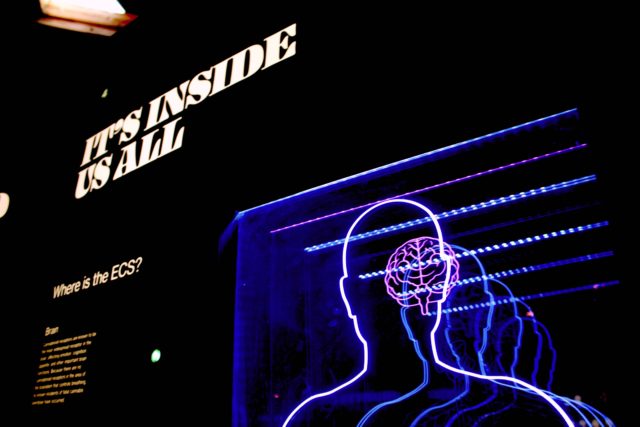
What is Psychographics?
It is the study of the individual based on his interests, personality, and habits. It is the natural evolution of profiling through socio-demographic, geographical and behavioral data.
Psychographics is not a recent field of study: as a branch of psychology, it was developed and applied to marketing and traditional research (focus groups, market research, etc.).
However, it was through digital technology that it developed its full potential.
By analyzing user behaviors on social media, E-Commerces and any "virtual" environment, Psychographics is now able to profile users in a way that was unthinkable just a few years ago.
Its goal is to understand individual characteristics such as emotions, values, and attitudes, as well as a whole other set of psychological factors.
All these data provide precious insights about the motivations behind people's behavior, for example, why they buy a specific product, or support a certain cause, or vote for a particular political candidate.
We all heard about the sadly known Cambridge Analytica accident. The researchers and marketers involved were able to boost numerous political campaigns thanks to illegally retrieved psychographic data from people's social profiles.
The method they used was to divide the subjects into five macro-clusters, based on whether they showed presented or not one of the following psychological traits, namely:
- Openness: this trait indicates how open-minded a person is. A person with a high level of openness is curious, creative and open to change;
- Consciousness: a person who shows a high level of consciousness is responsible, sets long-term goals and does not act impulsively;
- Extroversion: the subjects characterized by this trait love to have fun with people and live in social environments. They are also enthusiastic, but often let themselves be guided by others. They also love being in the center of attention;
- Agreeableness: a person with high levels of agreeableness is usually friendly, kind and diplomatic. He also shows optimism and tend to trust the others;
- Emotional stability (or its negative counterpart, Neuroticism): a person with a high level of emotional stability who tends to easily experience positive emotions;
This model, which you can find outlined below, is known as OCEAN (the first letters of the psychographic categories), or BigFive.

How does this model apply to marketing?
Through Psychographics, it is possible to understand the fundamental individual characteristics of your customers, in order to collect useful guidelines on how to communicate and create one-to-one messages.
Let's make an example. A company that works in the energy market needs to communicate a promotional offer to its public, but first it decides to cluster it with the OCEAN psychographic model.
Practical examples of psychographic profiling.
If the customer shows a strong affinity to the Openness cluster, he will receive a graphically creative banner that offers the possibility to customize the energy contract according to his needs.
Elseways, if the customer belongs to the Extroversion cluster, he will be told that the offer has been appreciated by many people, giving him the possibility to receive a discount if the customer brings a friend.
If the person belongs to the cluster of Conscientiousness, they will be given the opportunity, directly on the banner, to deepen the offer and discover its long-term advantages.
The possible customizations are infinite; will be the psychography expert, in concert with the creative, to find the best practical solutions to cover most of the target audience with the correct message.
Given the power that this method makes available to companies, the market has been subject to strict regulations. What Cambridge Analytica did just a few years ago would be impossible to accomplish today. In recent years, alternative tools have been developed, fully compliant with GDPR, which allows companies to acquire the same type of information and to use them - this time - for the benefit of people.
This is why Neosperience has created User Insight
User Insight is a tool that uses the latest Artificial Intelligence, Machine Learning and Advanced Analytics technologies to allow companies to learn about the psychographic traits of customers, thanks to the analysis of their browsing behaviors.
In a market where the personalization of the offer has become the key of success of commercial proposals, understanding the needs and desires of each customer in full respect of its privacy becomes an essential factor.
The future belongs to those who will be able to use new technologies to constantly improve customer experience, progressively reducing the "gaps" between physical and digital worlds. At Neosperience, we believe that this can be possible, and we work to give substance to a technology that allows companies to be more and more empathic and closer to their customers.
Photo by Markus Spiske on Unsplash



 Your magnifing glass to deeply understand your users and increase the value of each relatonship.
Your magnifing glass to deeply understand your users and increase the value of each relatonship. Listen to the voice of your customers deeply to understand what they truly want.
Listen to the voice of your customers deeply to understand what they truly want. The Lead Generation Platform to get leads from anonymous traffic on your website.
The Lead Generation Platform to get leads from anonymous traffic on your website.  Understand the behavior of people in physical spaces and monitor safety requirements.
Understand the behavior of people in physical spaces and monitor safety requirements. The Digital Commerce Platform designed to follow the most modern technological standards..
The Digital Commerce Platform designed to follow the most modern technological standards.. The XReality platform to tell brand and product stories by connecting physical and digital worlds.
The XReality platform to tell brand and product stories by connecting physical and digital worlds. Points, rewards, levels, badges, missions: a world of nudges to nurture your customer community.
Points, rewards, levels, badges, missions: a world of nudges to nurture your customer community. Discover all the other solutions!
Discover all the other solutions!









